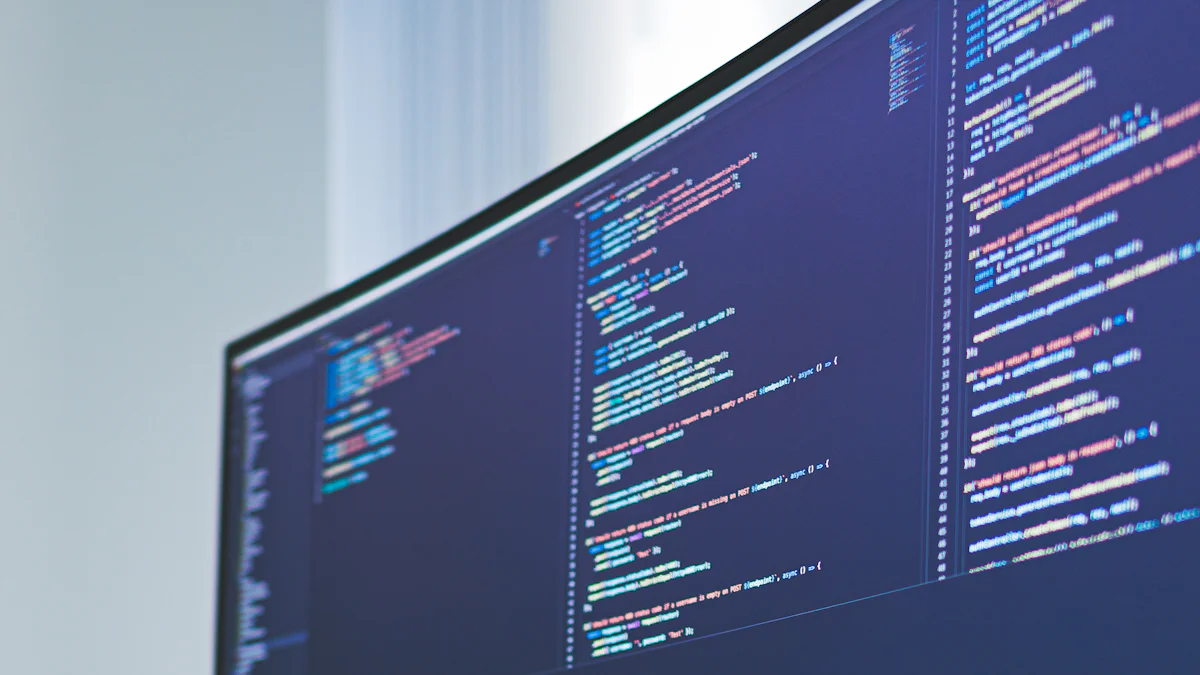The Future of Web Design in 2024
The future of web design holds exciting possibilities as we look ahead to 2024. With rapidly evolving technologies and changing user expectations, businesses must stay ahead of the curve. In this section, we will explore the upcoming trends and innovations that will shape web design in the coming years. From augmented reality and mobile-first design to minimalism and bold typography, we will delve into the key elements that will define the future of web design. Join us as we uncover the latest advancements and explore how augmented reality, mobile-first design, minimalism, bold typography, plus more are poised to shape web design.
Integration of Augmented and Virtual Reality in Web Design

Augmented reality (AR) and virtual reality (VR) transform how we interact with websites, offering immersive and interactive experiences. AR is revolutionising the industry in web design by overlaying digital elements onto the real world, enhancing user engagement and creating unique experiences. Conversely, VR transports users to virtual environments, allowing them to explore and interact with content in a 3D space.
With AR integration in web design, small businesses can provide virtual shop tours or AR-driven product demos for their e-commerce stores, giving customers a realistic preview of their offerings. This technology has the potential to revolutionise e-commerce by bridging the gap between online and offline shopping experiences.
Similarly, VR in web design opens up new possibilities for storytelling and brand experiences. Users can be transported to virtual showrooms or immersive environments that engagingly showcase products or services. This level of interactivity enhances user engagement and helps businesses stand out from their competitors.
Integrating AR and VR in web design offers endless opportunities for creativity and innovation. As these technologies evolve, we can expect more seamless integration into websites, providing users with unforgettable experiences that blur the line between the digital and physical worlds.
The Importance of Mobile-First and Responsive Design
In today’s digital landscape, mobile devices have become the primary means of accessing the internet. As a result, designing for mobile-first has become essential in creating successful websites. The mobile-first design emphasises the importance of prioritising mobile devices when developing a website, ensuring seamless experiences across all platforms.
By adopting a mobile-first approach, businesses can improve user experience and increase their visibility on search engines. Mobile-friendly websites provide users with an optimal browsing experience and contribute to better search engine optimisation (SEO) rankings. Search engines like Google now prioritise mobile-friendly websites in their search results, making it crucial for businesses to invest in mobile-optimised web design.
Responsive design is another critical aspect of creating user-friendly websites. With responsive design, websites adapt to different screen sizes and devices, providing users with a consistent and enjoyable browsing experience across desktops, tablets, and smartphones. This flexibility allows businesses to reach a wider audience and ensures that their content is accessible regardless of the device being used.
The benefits of mobile-first and responsive design are undeniable. By designing for mobile devices first and implementing responsive design principles, businesses can enhance user experience, improve SEO rankings, and effectively engage with their target audience.
Embracing Minimalism and Bold Typography
In the world of web design, the trend of minimalism has gained significant popularity. Minimalist web design emphasises simplicity, removing unnecessary elements and clutter to create clean and visually appealing websites. This approach not only enhances website performance but also improves user experience.
Minimalistic web design prioritises content and functionality, allowing users to navigate seamlessly without distractions. By eliminating excessive visuals and complex layouts, businesses can effectively convey their message and engage users with a clear and concise interface.
Another powerful tool in web design is bold typography. Bold typography captures user attention and creates a visual hierarchy that guides them through the content. Businesses can strategically use different font weights, sizes, and styles to highlight critical messages, headlines, or calls to action.
When incorporating bold typography into web design, it’s essential to consider readability and legibility. Choosing fonts easily read on different devices ensures users can consume the content effortlessly.
By embracing minimalism in web design and utilising bold typography effectively, businesses can create visually stunning websites that leave a lasting impression on visitors while delivering their brand message concisely.
Enhancing User Experience with 3D Elements and Interactive Web Spaces

In the ever-evolving landscape of web design, incorporating 3D elements has become a popular trend. By integrating 3D graphics into web design, websites can add depth and realism and create engaging and responsive designs. These elements provide an immersive experience for users, making them feel more connected to the content.
The use of 3D graphics in web design allows businesses to showcase products or services in a visually captivating way. 3D elements can bring life to static web pages and captivate users’ attention through a rotating product display or an interactive virtual tour.
Additionally, interactive web spaces play a crucial role in enhancing user experiences. Businesses can create unique and memorable interactions by designing interactive web spaces that encourage user exploration. This could include scroll-triggered animations, parallax effects, or interactive infographics, allowing users to engage actively with the content.
The benefits of incorporating 3D elements and interactive web spaces are numerous. They enhance user engagement and contribute to increased time spent on the website and improved conversion rates. By providing users with immersive and interactive experiences, businesses can leave a lasting impression and differentiate themselves from competitors.
The Rise of Voice User Interfaces and AI-Driven Chatbots
Voice user interfaces (VUIs) have gained significant popularity in web design, revolutionising how users interact with websites. With the growing adoption of voice assistants like Siri, Alexa, and Google Assistant, businesses recognise the importance of integrating voice commands into their web design.
Exploring the benefits of voice user interfaces in web design; we discover how voice commands enhance accessibility and user convenience. By allowing users to navigate websites using natural language, VUIs provide a more intuitive browsing experience. Users can speak their commands or queries instead of typing, making accessing information more accessible for those with limited mobility or visual impairments.
In addition to VUIs, AI-driven chatbots are becoming increasingly prevalent in web design. These chatbots use artificial intelligence algorithms to understand and respond to user queries or provide assistance. They can handle customer inquiries, offer personalised recommendations, and even complete transactions.
Integrating voice user interfaces and AI-driven chatbots in web design is transforming how businesses engage with their customers. Businesses can deliver seamless interactions and improve customer satisfaction by providing voice-enabled user experiences and incorporating chatbot functionalities.
AI-Powered Personalisation in Web Design
AI-powered personalisation is revolutionising web design by tailoring content and design based on user behaviour and preferences. Businesses can create personalised web experiences that resonate with individual users by leveraging artificial intelligence algorithms.
Dynamic content recommendations play a crucial role in enhancing user engagement. By analysing user data, AI algorithms can suggest relevant content, products, or services to users based on their browsing history or previous interactions. This level of personalisation not only improves user satisfaction but also increases the likelihood of conversions.
Implementing dynamic content recommendations in web design involves integrating AI-driven recommendation engines into websites. These engines continuously analyse user data and provide real-time suggestions that will most likely capture the user’s interest.
Businesses can build stronger connections with their audience by offering customised user interfaces and personalised experiences. Users feel valued when they receive tailored recommendations that align with their interests and preferences.
The power of AI-powered personalisation lies in its ability to deliver relevant and timely content to users, ultimately enhancing their overall browsing experience and driving business growth.
Advancements in Data Visualisation and Dynamic Infographics
Data visualisation has become integral to web design, allowing businesses to present complex information in a visually appealing and easily understandable format. In this section, we will explore the latest advancements in data visualisation techniques that are shaping the field of web design.
By utilising innovative data visualisation techniques, businesses can enhance understanding and engagement with their audience. Visual representations of data make it easier for users to grasp complex concepts and trends, leading to more informed decision-making.
Dynamic infographics take data visualisation further by presenting information interactively and engagingly. These infographics allow users to interact with the content, exploring different aspects and gaining deeper insights. By incorporating interactivity into infographics, businesses can create memorable experiences that captivate their audience.
To create interactive infographics, designers can leverage various tools and techniques. From using HTML5 and CSS animations to integrating JavaScript libraries like D3.js or Chart.js, numerous options are available to bring infographics to life.
The advancements in data visualisation and dynamic infographics have opened up new possibilities for storytelling and information dissemination on the web. By leveraging these techniques, businesses can effectively communicate complex ideas while keeping their audience engaged.
Incorporating Neumorphism and Soft UI in Modern Design

Neumorphism, also known as “soft skeuomorphism,” is a design trend combining skeuomorphic design elements with minimalism. In this section, we will explore the concept of metamorphism and its impact on modern web design.
Neumorphism creates visually appealing interfaces by using subtle shadows and highlights to mimic the appearance of physical objects. This design approach adds depth and realism to digital interfaces, making them feel more tangible and interactive.
Businesses can create visually stunning interfaces that capture users’ attention by implementing neumorphism in web design. The soft shadows and gentle gradients used in neuromorphic designs provide a sense of elegance and sophistication.
Soft UI, on the other hand, focuses on creating intuitive user experiences through soft colours, rounded edges, and subtle animations. This design style prioritises simplicity and ease of use, allowing users to navigate websites effortlessly.
Incorporating neumorphism and soft UI elements into modern web design can enhance user engagement and improve overall aesthetics. By combining these design trends with other elements like bold typography or 3D graphics, businesses can create unique and memorable user experiences.
Prioritising Accessibility and Inclusive Design
In today’s digital landscape, it is crucial to prioritise accessibility and inclusive design when creating websites. This section will explore the importance of designing accessible websites for all users, including those with disabilities.
Accessible web design ensures that people with disabilities can access and navigate websites effectively. By implementing accessibility features such as alternative text for images, proper heading structure, and keyboard navigation options, businesses can provide a user-friendly experience for all users.
Inclusive design goes beyond accessibility by considering all users’ diverse needs and preferences. It involves creating user experiences with different abilities, languages, cultures, and devices. By adopting inclusive design principles, businesses can reach a wider audience and ensure that their websites are usable by everyone.
Addressing the focus on inclusive web design is ethically essential and beneficial for businesses. Inclusive design allows companies to tap into new markets and engage with a broader range of customers. Moreover, it fosters positive brand perception and demonstrates a commitment to diversity and inclusivity.
By prioritising accessibility and embracing inclusive design practices in web development, businesses can create user-friendly websites that cater to the needs of all users.
Future Outlook: Emerging Technologies Shaping Web Design
As we look beyond 2024, the future of web design holds exciting possibilities. Emerging technologies are set to shape the industry and redefine how websites are designed and experienced. From micro-interactions to feedback animations and more, these innovations will continue to enhance user engagement and interaction.
The rapid advancement of technology opens up new avenues for creativity and experimentation in web design. We expect to see more immersive, interactive, and personalised web experiences as designers and developers embrace these emerging technologies.
The future of web design is dynamic and ever-evolving. By staying informed about the latest trends and innovations, businesses can stay ahead of the curve and deliver exceptional digital experiences to their users.
Ready to Shape Your Digital Future with Cutting-Edge Web Design?
Connect with Design Grid, your expert partner in navigating 2024’s web design innovations. Let’s create a website that’s not just a platform but an experience. Contact Design Grid today and step into the future of web design!


